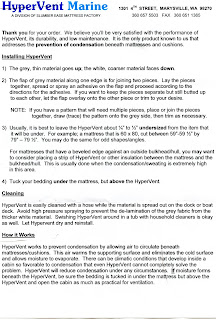Most of Circe's vinyl ceiling and head liners are original and are in very good shape throughout the boat....with one exception, in the head! For reasons best known to the factory, all the ceiling-liner installations were done using plain steel upholstery staples. Time and moisture causes the staples to corrode and disintegrate, allowing the liner and the trim welt to separate from the backing panels, leaving black stains on the teak below......UGLY. Past leaks from the port above the vanity had made things even worse! There was evidence of the problem in a couple of places, but over the vanity it was severe.
This corrosion of staples seems to be a common problem with Islanders in general and Freeports in particular. The use of plain steel rather than stainless or monel staples might have been a cost reduction exercise, a simple oversight or a fundamental specification error but, whatever the reason, it resulted in an unsightly mess that needed to be repaired.

As soon as we started to pry open the trim welt, the whole thing fell apart!
The one good thing with the rusty staples was that everything pulled apart easily, but the bad thing was all the sharp, rusty little 'stumps' left sticking up from the backing panel.......some matelot blood was spilled!!! We couldn't pull them out, they were too fragile, so we pounded them into the panel and hoped they wouldn't interfere with the new staples.
Almost the whole length of the vanity was affected so we tore it all off.
While the vinyl was detached we went after the stains on the backing panel with a one-part teak cleaner from WM.
(A little detour from the head-liner here)
This teak cleaner worked really well on the black stains, so well that we tried it on some bad stains inside the vanity........presto, magico......gone! A little teak oil and the whole interior of the vanity was better than new! We are going to varnish the vanity exterior.


Vanity Lower Shelf - With Teak Cleaner Applied
Vanity Lower Shelf - After Teak Cleaner

Vanity Lower Shelf Partially oiled. Watco is much cheaper and just as good or better than a similar 'marine' teak oil product.
(Back to the head-liner)
When the vinyl had first been installed it appeared to have been cut oversize, so as to have something to hold while stretching and stapling the bottom edge. After the stapling was finished it was trimmed off close to the staples so it could be covered by the trim welt but now there was nothing left to grab on to as we tried to re-stretch and re-staple it.
We ended up using the heat gun (very carefully!) and softened the vinyl so that we could pull it tight again while staying as close as possible to the original position.
With so little to hold on to it was difficult to get a perfectly aligned edge but we did the best we could. Yes, those are stainless steel staples!
It all turned out pretty good although, in one spot, the original vinyl edge had been trimmed so tight against the factory staples that there was literally nowhere for us to put our staple, so we got a small sag. Its still 1000% better than it was!

























